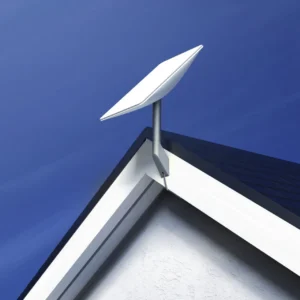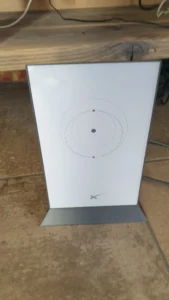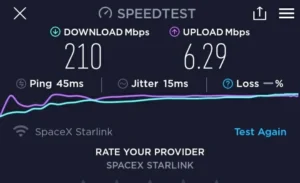Low Earth Orbit (LEO) satellite broadband could revolutionise the telecoms industry
And here’s why…
Article first published by Chris Thomas on 1st April 2022
Fast and reliable rural broadband has been an issue for years. The big networks are concentrating their efforts on where the money is, urban environments, business parks, towns, cities and large villages.
It makes sense. In most cases the infrastructure is already there and in reasonable condition. Local exchanges have capacity, cable runs are shorter and the density of customers is greater.
Rural areas require a lot more investment. Aged infrastructure requires repair or replacement, new trenches dug, collapsed ducting fixed and rotten telegraph poles renewed. All for the sake of a few hundred potential connections.
4G technology has helped immensely over the last 5 years or so, but even that can suffer from high contention (too many users on the same mast) and varying signal.
Satellite Broadband isn’t new

LEO, such as Starlink and OneWeb addressed this by flooding the sky with lots of smaller satellites at much lower orbits, thus reducing the time taken for the data to travel through the atmosphere. Coupled with huge advancements in the technical “stuff” inside it, the latency for an LEO data connection is significantly reduced and the potential bandwidth increased, to the point where it’s comparable with 4G.
Advances in launch technology, economies of scale, and huge investment also means that it is now more affordable for the end user. The kit is expensive, but the monthly cost is manageable if you must have fast broadband and no other options are available. The basic kit costs £579, but factor in extras such as mounting kits and an ethernet adapter.. more on that later.
Our involvement with Starlink

Unfortunately the SpaceX business model doesn’t currently work with a reseller, choosing to sell direct to consumers instead. What that means is that traditional resellers can’t really get involved with Starlink other than providing installation services to those customers that don’t want to do it themselves.
Out of the box

First of all, the basic kit consists of the dish, a ground stand, a 23 metre long cable to connect the dish to the router and the router itself. It is very basic and anything else is an optional extra.
On the ground it’s more succeptible to theft, damage, animals etc. so ideally it will want to be mounted up high, that means buying an additional bracket.
Whilst being very simple to set up, the router has got hardly any configuration options. It will allow you to set up a single WiFi network (SSID), and that’s it. There are no wired ethernet ports and no capability to set up alternative SSIDs for guests. So, unless you live in a fairly small dwelling that the router can cover with it’s own in-built WiFi, you’re going to need to buy the ethernet adapter and some network kit, including a decent WiFi setup.
The router also has no status lights on it. Not one. Some might argue that they’re not needed, but when you’re used to seeing activity and status indications it can be quite unnerving when they’re not there.
What we found!

Initial set up is very easy and if you want a simple setup that only uses WiFi then it does the job.
It gets a little bit more complicated when you need it to do more. The property here is large, and we’d already installed a TP-Link Deco WiFi system with our original 4G solution, with 6 access points and other devices such as playstations, CCTV and smart TVs wired back to a central ethernet switch.
The (optional extra) ethernet adapter sits in between the router and the dish as a piggy back cable. It gives you ONE ethernet port. The router does act as a DHCP server, but there are no configuration options available. You can’t even turn off the WiFi, so if you have your own mesh system then it’s going to interfere somewhat.
There is a bridge mode, which will turn off the WiFi, but that turns off everything else and the router becomes a simple access only router with a single IP address. So, you have to front it with another router to take care of the network and use the Starlink on it’s WAN port. Way too complicated for the standard domestic user.
Internet speeds were great, with an average of about 180Mbps download and 15Mbps upload. Easily enough bandwidth for a family, working from home, VoIP calls, streaming in 4K and online gaming.
The conclusion?

The potential for this to be used for business is there too. There is a business version that gives you two dishes, doubling the throughput, if you needed to use it as your sole internet connection in a rural location. But it could also be used as a backup to a leased line with the right configuration.
As with any technology in it’s infancy, there are likely to be improvements over time. Whether that means newer hardware with more capability, greater bandwidth, or even a reduction in costs, we don’t quite know.
Want help with your internet connectivity? Get in touch with us using the contact form, or email us info@litenetuk.com


